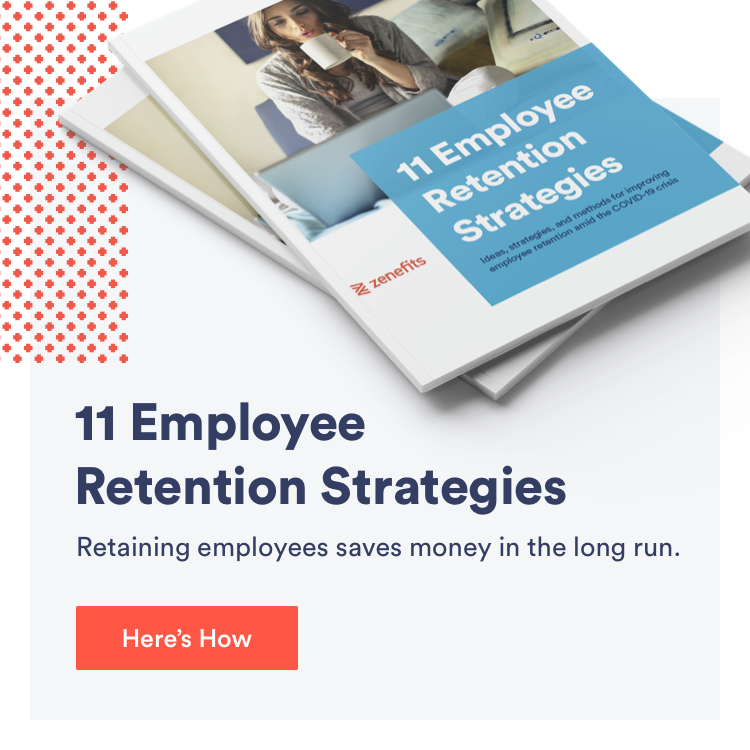Open enrollment begins on November 1, 2020 in most states. Have you started preparing?

Here's what you need to know about open enrollment 2021:
-
You can enroll between Nov. 1 — Dec. 15, 2020 in most states
-
Various states have their own exchanges that might have some flexibility in enrollment periods, so make sure you check in with your state-run exchange for regional details
-
SBOs: you’ll want to talk to a health insurance agent to see what health plans are the best choice is for you and your employees
-
Remember to listen to your employees. Host roundtable events to get their feedback on their benefits program. Engage them
-
It is not expected that COVID-19 will alter the open enrollment dates for each state, however states may enact special enrollment periods to help those looking for coverage
-
If you need coverage outside of any enrollment period, you’ll have to be prepared to prove you had a qualifying life event
Start preparing for open enrollment 2021 today. You can enroll between November 1 through December 15, 2020 in most states. However California, Colorado, and Washington D.C. have permanently expanded their open enrollment period, giving residents and small business owners in those states a little extra breathing room.
Others who can enroll year-round include those who qualify for Medicaid or CHIP or tribally-enrolled Native Americans and Alaska Natives. Indigenous Americans are technically considered “covered” by Indian Health Services, which means they are exempt from being required to enroll (though indigenous people certainly can enroll if they like — year-round).
Various states have their own exchanges that might have some flexibility in enrollment periods too, so make sure you check in with your state-run exchange for regional details. If you don’t enroll during required enrollment periods, you’ll need to wait until you have a “qualifying event” to enroll.
Most states use www.healthcare.gov as their exchange platform. It’s expected that 35 states will use this URL in autumn of 2020, and it can be a great resource for further open enrollment details.
Various states have their own exchanges that might have some flexibility in enrollment periods too, so make sure you check in with your state-run exchange for regional details.
It’s a date
If you live in California, your extended open enrollment period is November 1 through January 31, 2021. You may have noticed some variances in California’s open period in recent years, but this 3-month window is the new and permanent open enrollment period. Washington, D.C.’s open enrollment period is also November 1 through January 31 and is permanent.
Colorado’s extended open enrollment period is November 1 through January 15, which is also the permanent window. If you enroll after December 15, keep in mind the new plan must be in place by February 1, 2021 at the latest.
Even though the 2017 market stabilization rule specified that November 1 through December 15 would be the enrollment period for every state, some state-based exchanges are struggling with logistical difficulties. It’s estimated that 16 states might not be ready to abide by this window in 2020.
That’s why state-based exchanges can have more flexibility as a transitional step towards getting to the November 1 through December 15 window. Again, this can vary state to state so it’s critical to know your state’s decision.
Health insurance options for small businesses
As you shop around for healthcare for your employees (as well as retirement and other benefit plans), remember that your business is unique. One of the biggest decisions is group versus individual or family plans for health insurance.
Group plans provide your employees with insurance benefits, while individual or family plans give your employees a more customized and affordable coverage. Individual or family plans can save you, as the business owner, a lot of time and expenses. You can also tap into government subsidies with individual/family plans that save you about 70%. However, individual/family plans aren’t for all small businesses. You’ll want to talk to a health insurance agent to see what the best choice is for you and your employees.
Bear in mind the cost to your employees, and avoid plans that are too expensive to use. Consider how much you are willing to contribute and how much that will leave your employees to contribute. It’s your responsibility to make sure plans are affordable, and that definition varies based on multiple factors. If you offer non-affordable coverage, you can be fined significantly each year for every full-time employee.
You already have the best “consultants” at your fingertips to figure out these plans: your employees. Listen to them. Host roundtable events to get their feedback on their benefits program. Engage them and they’ll feel more invested in your business, but be careful to only offer a few options — too many options can be overwhelming for any group.
It’s your responsibility to make sure plans are affordable, and that definition varies based on multiple factors. If you offer non-affordable coverage, you can be fined significantly each year for every full-time employee.
Open enrollment and COVID-19
Some tasks still need to be taken care of even during a pandemic, including open enrollment. Currently, it is not expected that COVID-19 will alter the open enrollment dates for each state.
However, much like this year, states may enact special enrollment periods to help those looking for coverage. For instance, special enrollment periods are currently open in California through June 30 and in Massachusetts until June 23.
Getting coverage outside of open enrollment
If you need coverage outside of any enrollment period, certain events need to be triggered. This can include
- Getting married
- Birth or adoption of a child
- Becoming a United States citizen
- Involuntary loss of healthcare coverage
- Permanent move to an area where you now have access to new healthcare plans
Those are just a few of the most common examples. You can find more information about qualifying events here.
Getting ready for open enrollment means doing your research as soon as possible. Understanding plans can be a challenge for anyone, so the earlier you prep the better off you’ll be.









